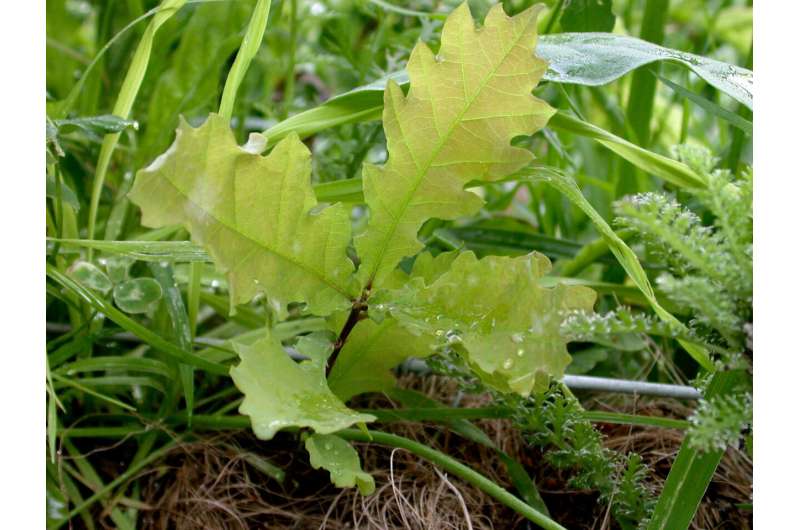Credit: INRAE, Corinne Enard
The acceleration of global warming due to human activities has made the pace of tree evolution and adaptation a core concern of researchers and foresters. Researchers from INRAE, the ONF, the CEA and the universities of Uppsala (Sweden) and Zhejiang (China) studied the evolution of oak trees in three French forests over the last three centuries, from the cold period of the Little Ice Age to the warming caused by human activities. Their results, published on 6 January in Evolution Letters, show that oaks evolve rapidly and can adapt to climatic changes in just a few generations. According to these findings, forest managers should shorten generations and promote natural forest regeneration to facilitate rapid stand evolution.
The team conducted a retrospective analysis of the evolution of oak trees between 1680 and the present day, a time scale that spans from the cold period of the Little Ice Age (1450–1850) to the warm period of the Anthropocene, from 1850 to the present day. The aim of this work was to understand how these tree populations have responded to different climatic variations. More specifically, they sequenced and analyzed the complete genome of six hundred oak trees from three French forests (Tronçais in the Allier region, Réno Valdieu in the Perche region and Bercé in the Sarthe region) divided into four age-based cohorts: the first with an average age of 340 years, the second of 170 years, the third of 60 years and the last of 12 years. The scientists studied the variations in allele frequencies observed in the genomes of the four cohorts. Alleles are the different possible versions of the same gene that can explain differences between trees with the same trait. The frequency of alleles of the same gene can vary according to environmental selection criteria such as drought or cold. They compared these variations against climate change, including the frequency of extreme events such as severe winters or extreme droughts.
A rapid evolution of oaks adapted to each climatic period
Results reveal an identical evolutionary pattern in the stands in the three forests, which differs according to the climatic periods studied. Variations observed in the genome of the oldest trees from the cold Little Ice Age are the opposite of those observed in young trees from the warm period of the Anthropocene. These evolving genomic signatures mean that oaks can evolve rapidly, with observable evolutionary jumps over just a few generations, and are able to redirect their evolutionary trajectories in a relatively short space of time to adapt quickly to changes in climate.
Adapting forest management to favor the evolution of oak trees
These results provide new knowledge for adapting forest management to climate change. They raise the issue of maintaining trees that are more than a hundred years old, adapted to a cold climate, which can slow down the evolutionary process by fertilizing younger trees. Shortening generations would thus accelerate evolution and limit the effects of poor adaptation due to pollination by old stands. Foresters can adapt natural regeneration practices to make more room for evolution. In natural regeneration, seeding occurs without human intervention and with very dense seedlings of over 100,000 seeds per hectare. The trees face strong selection pressure: 95% of individual trees are eliminated in the 15–20 years that follow, and trees best adapted to the current climate conditions will be selected.
More information: Dounia Saleh et al, Genome‐wide evolutionary response of European oaks during the Anthropocene, Evolution Letters (2022). DOI: 10.1002/evl3.269
Provided by INRAE
























